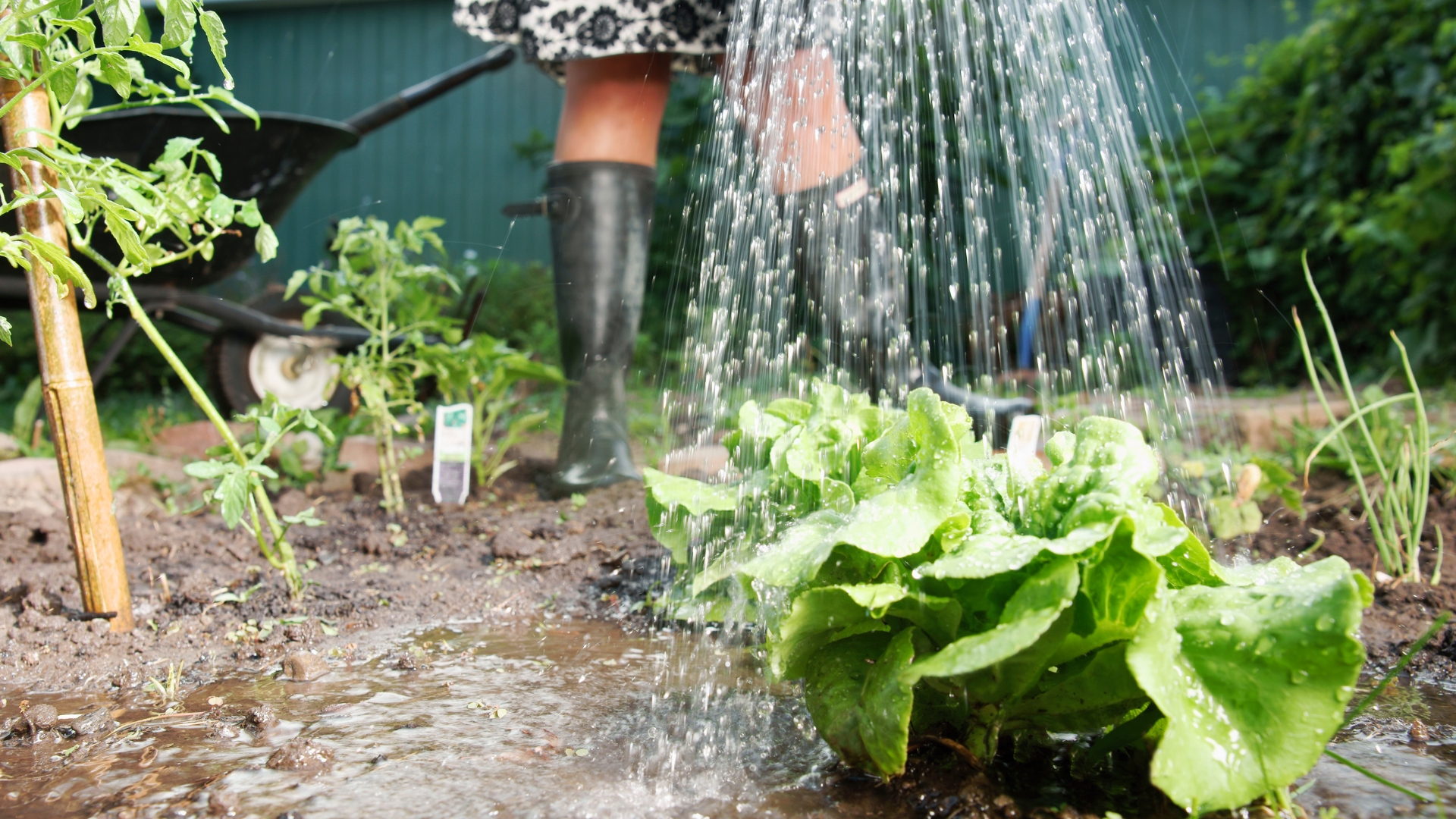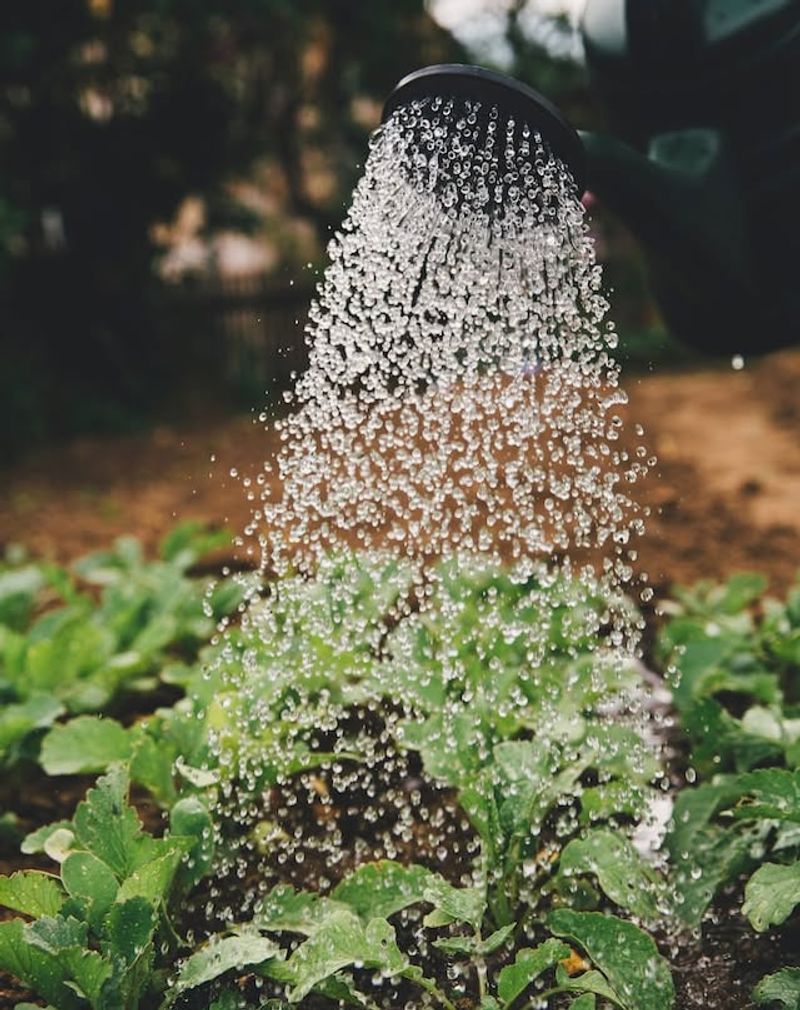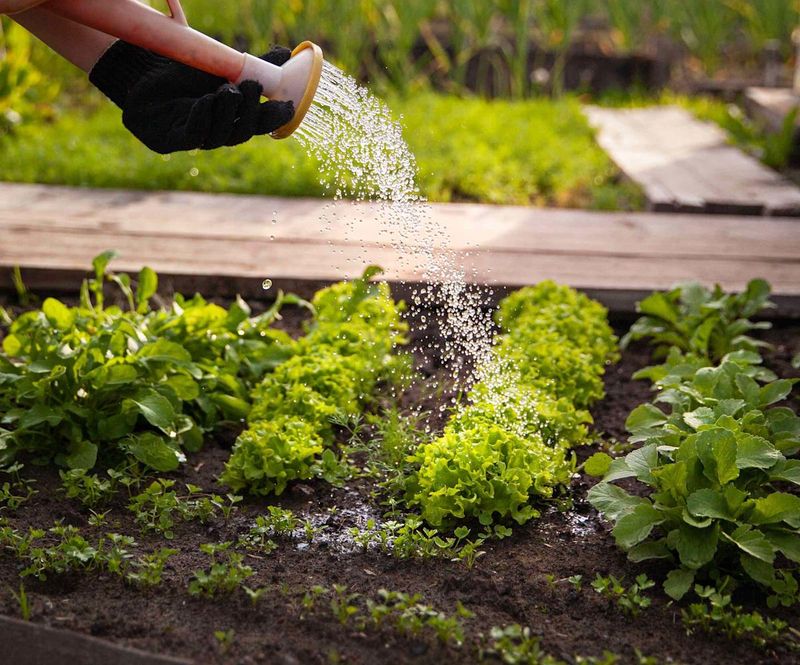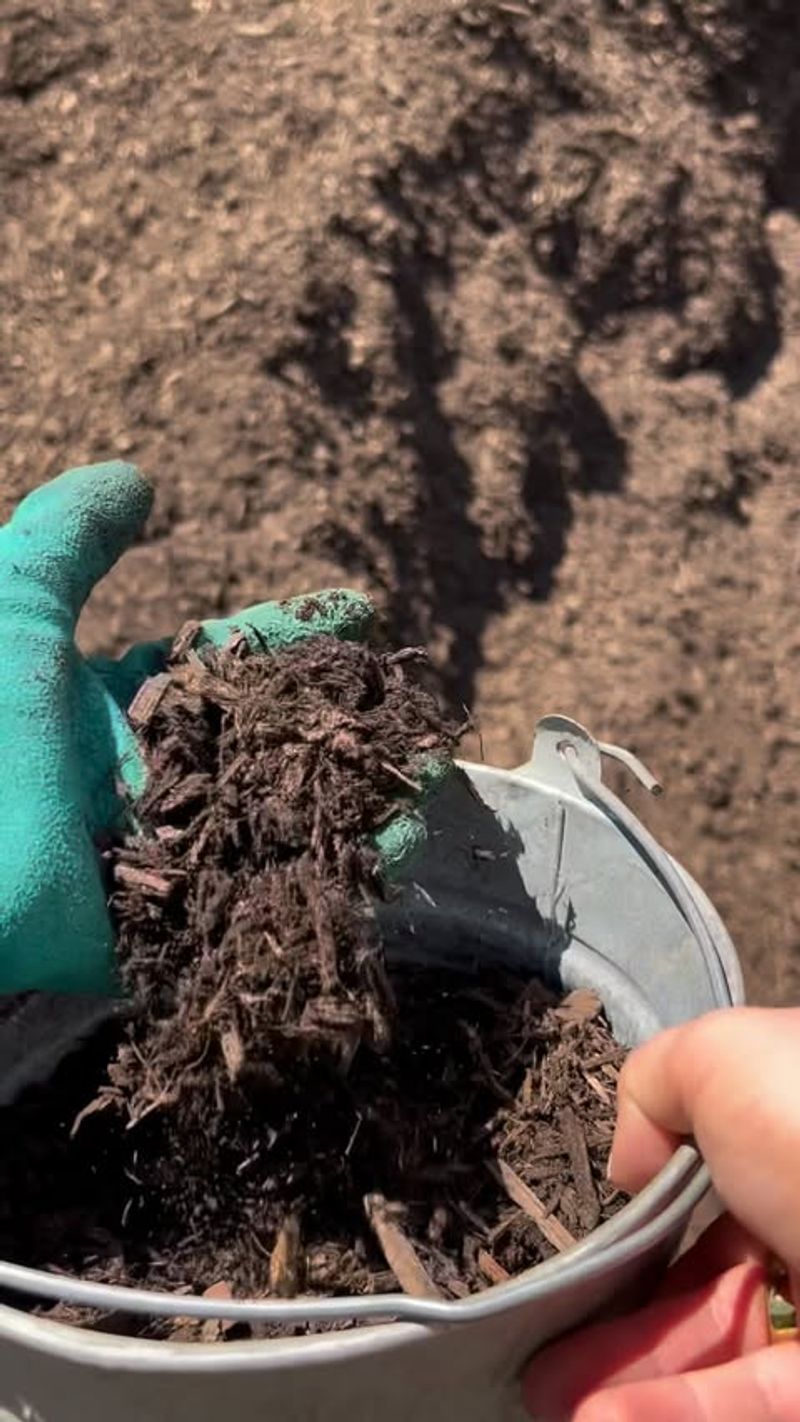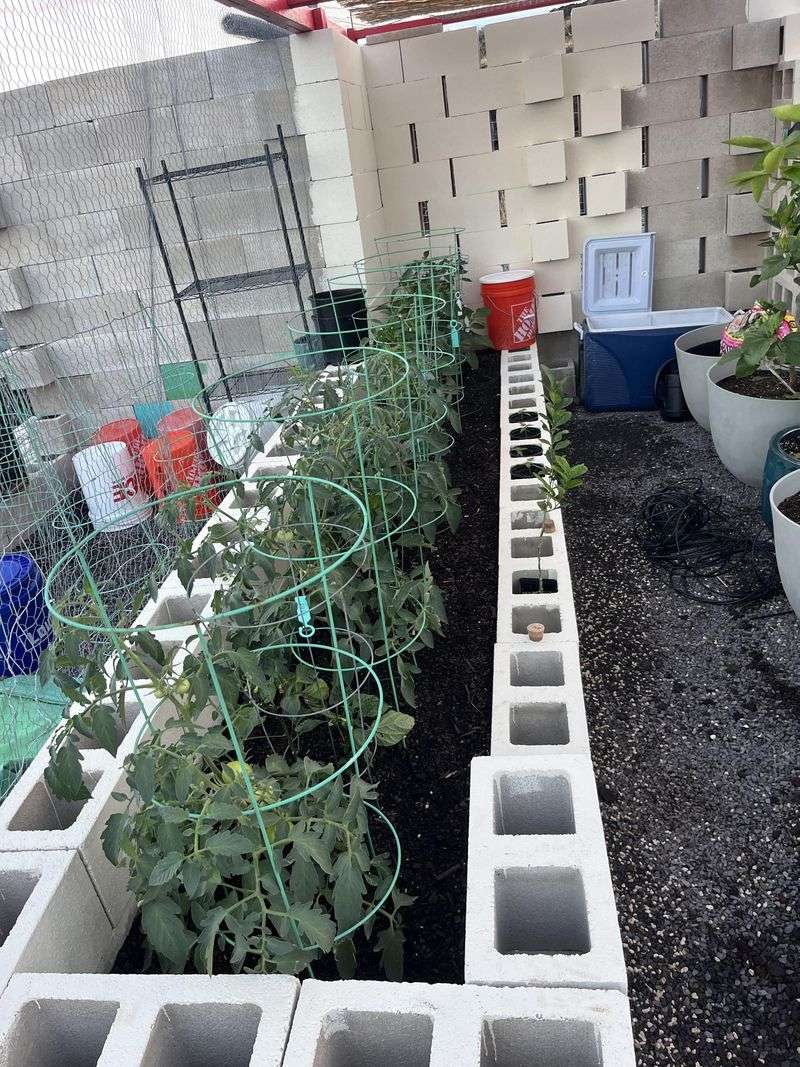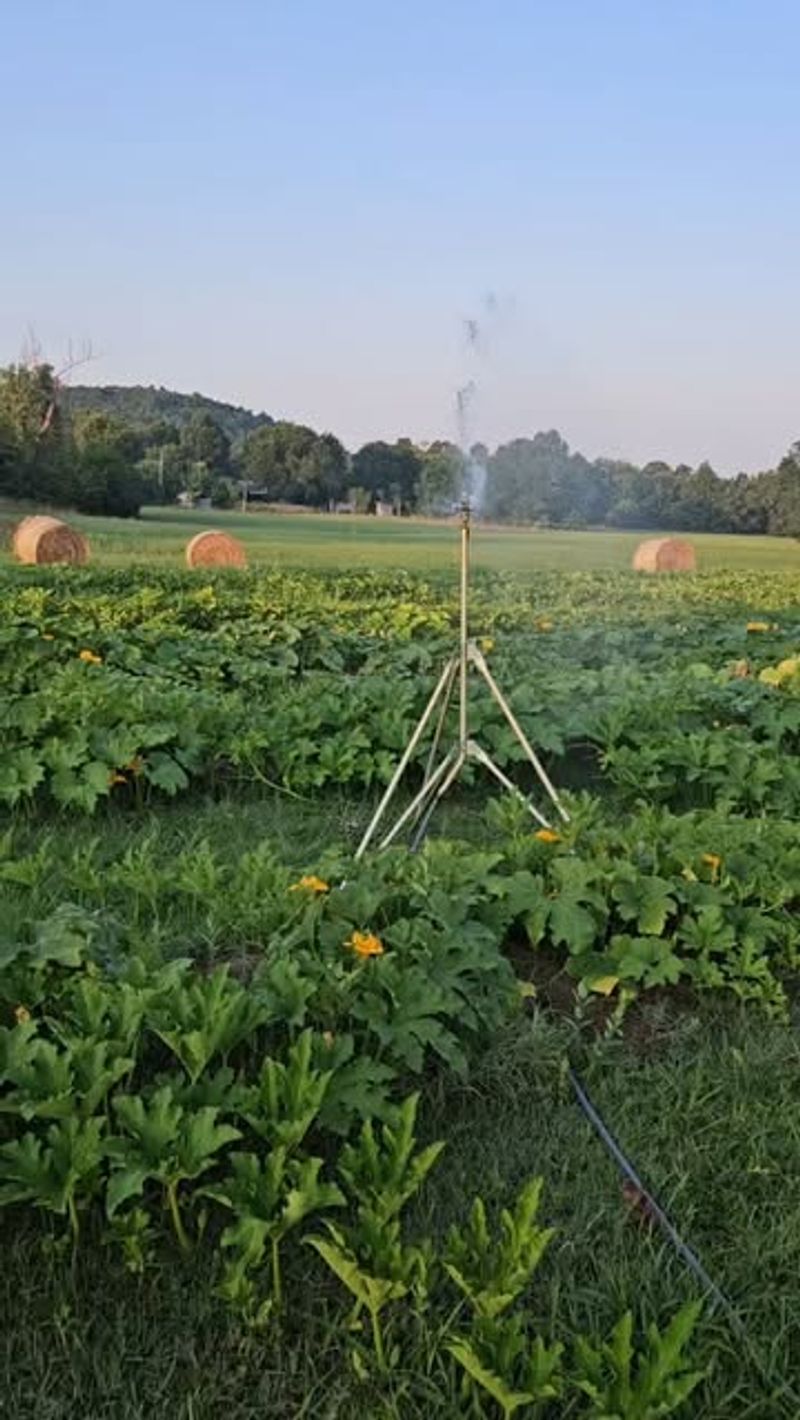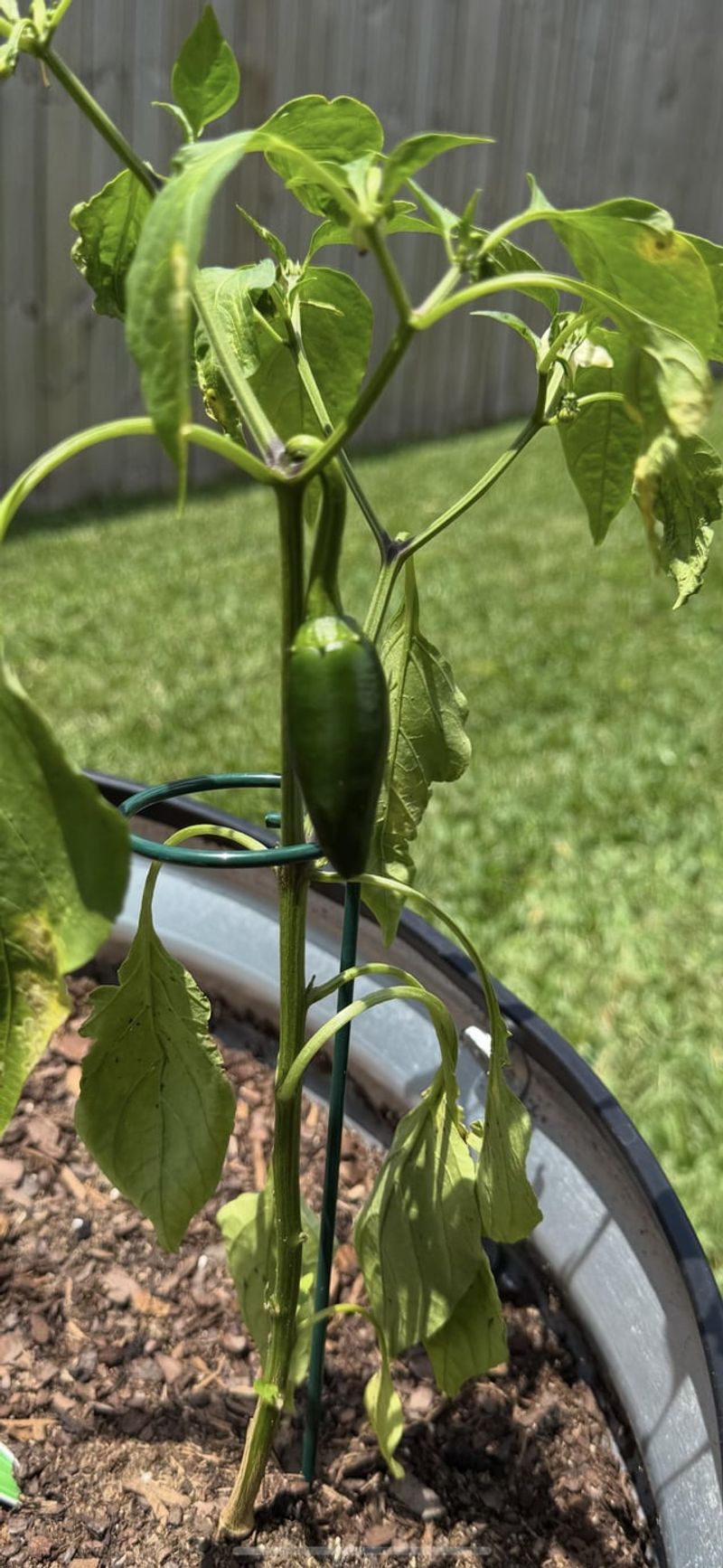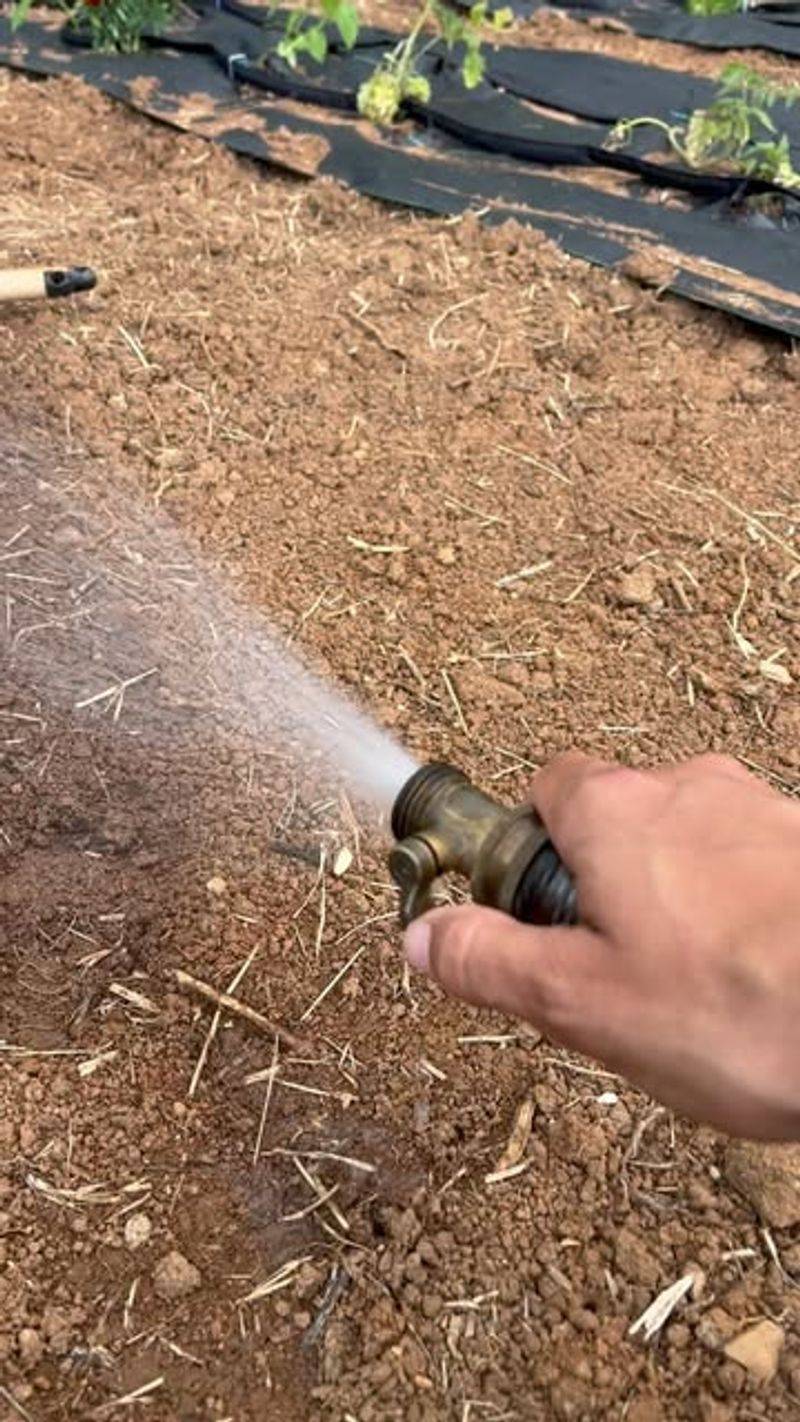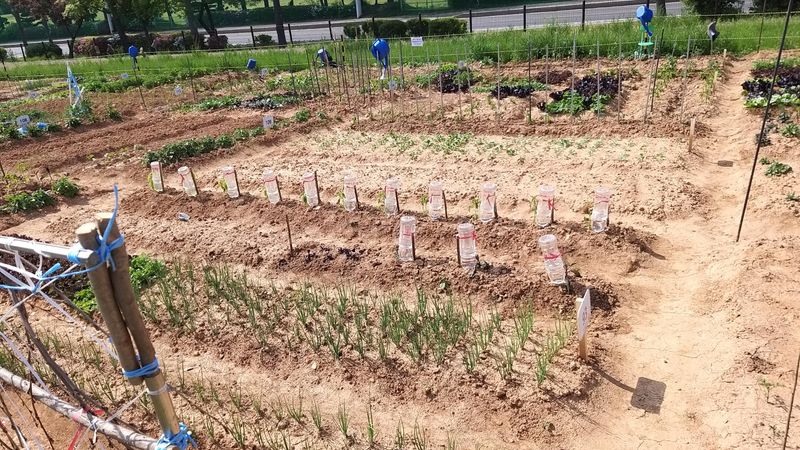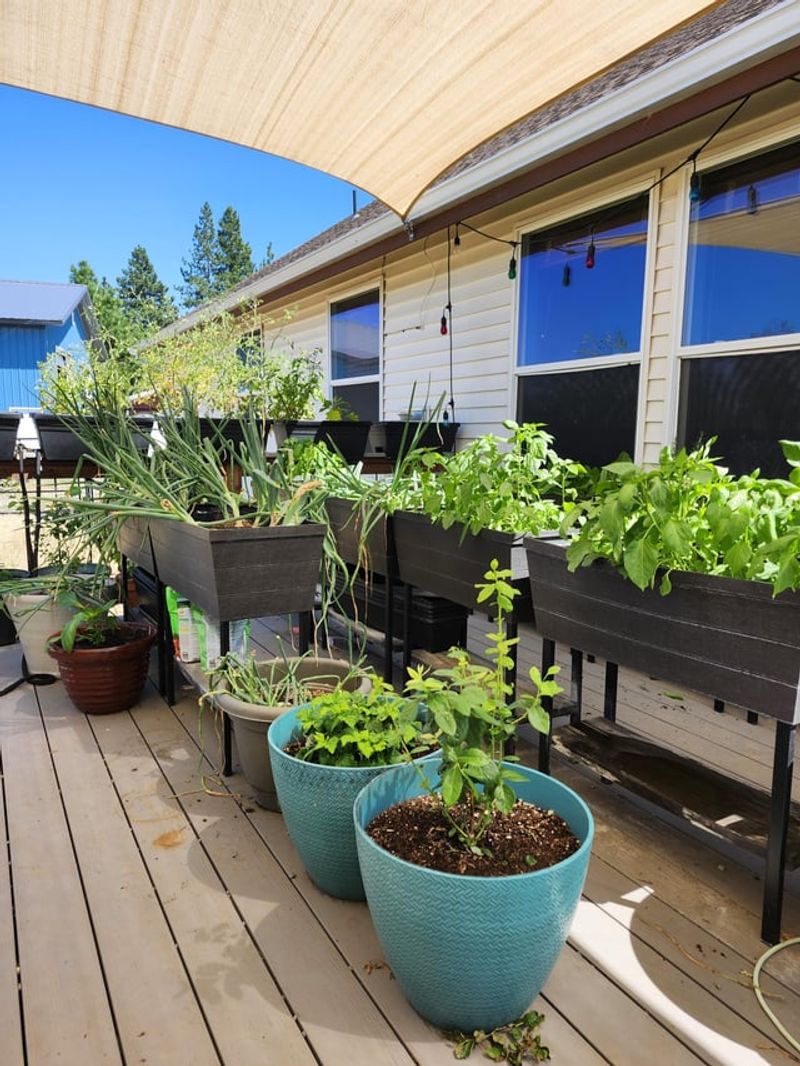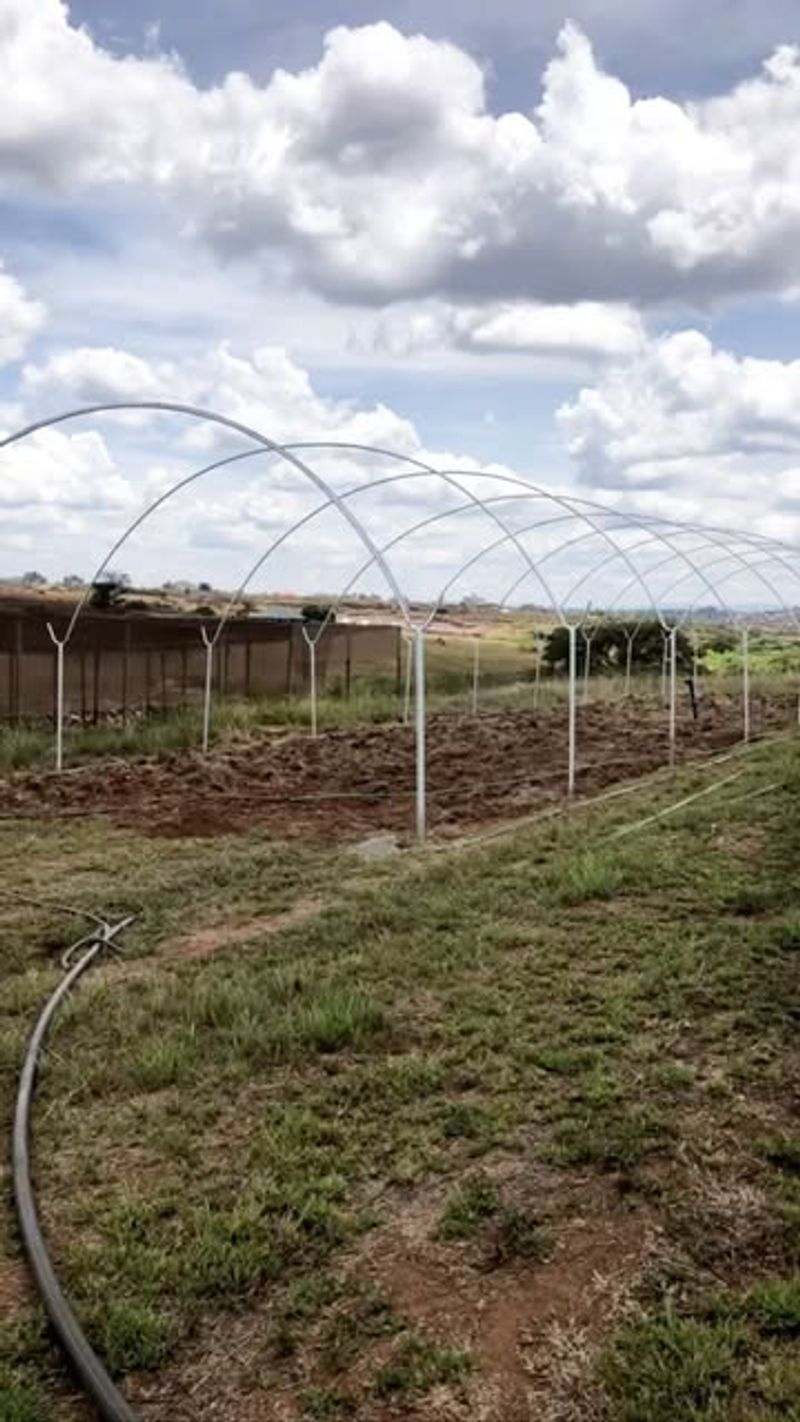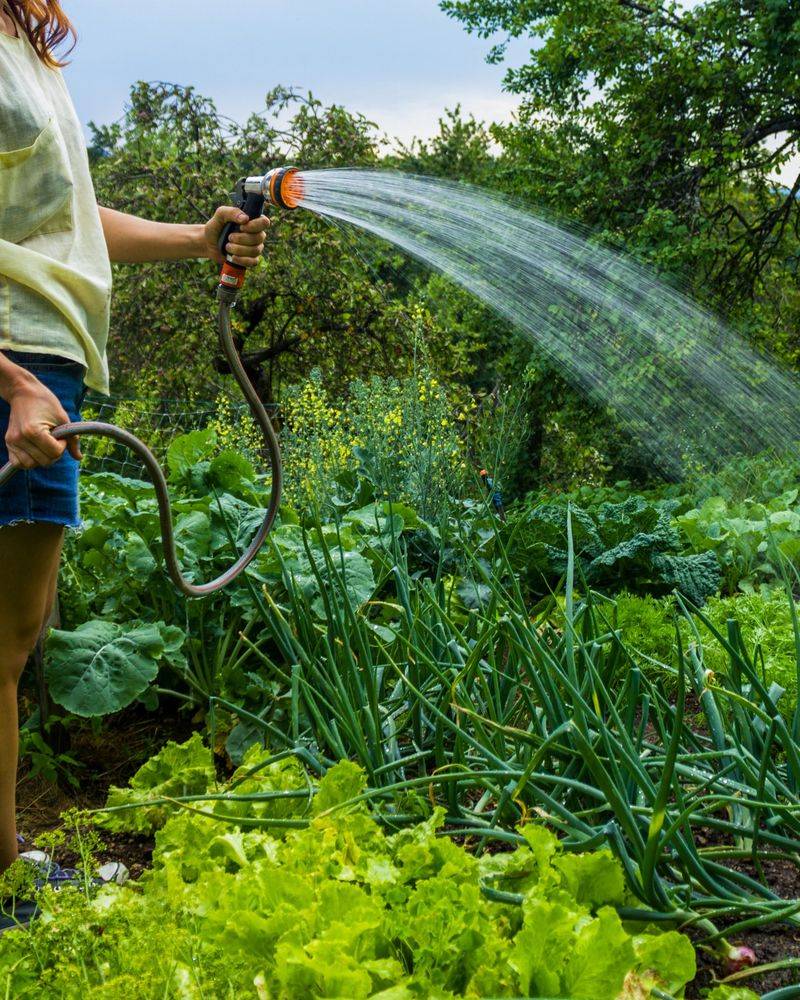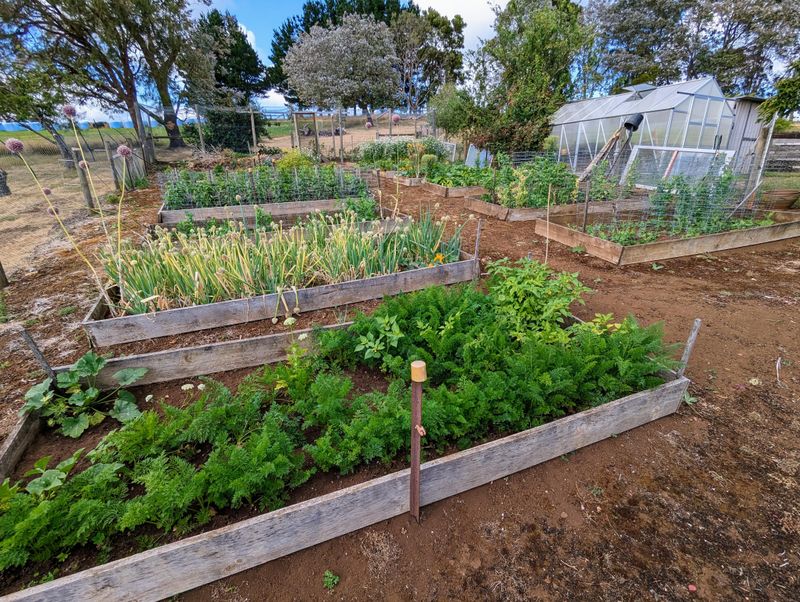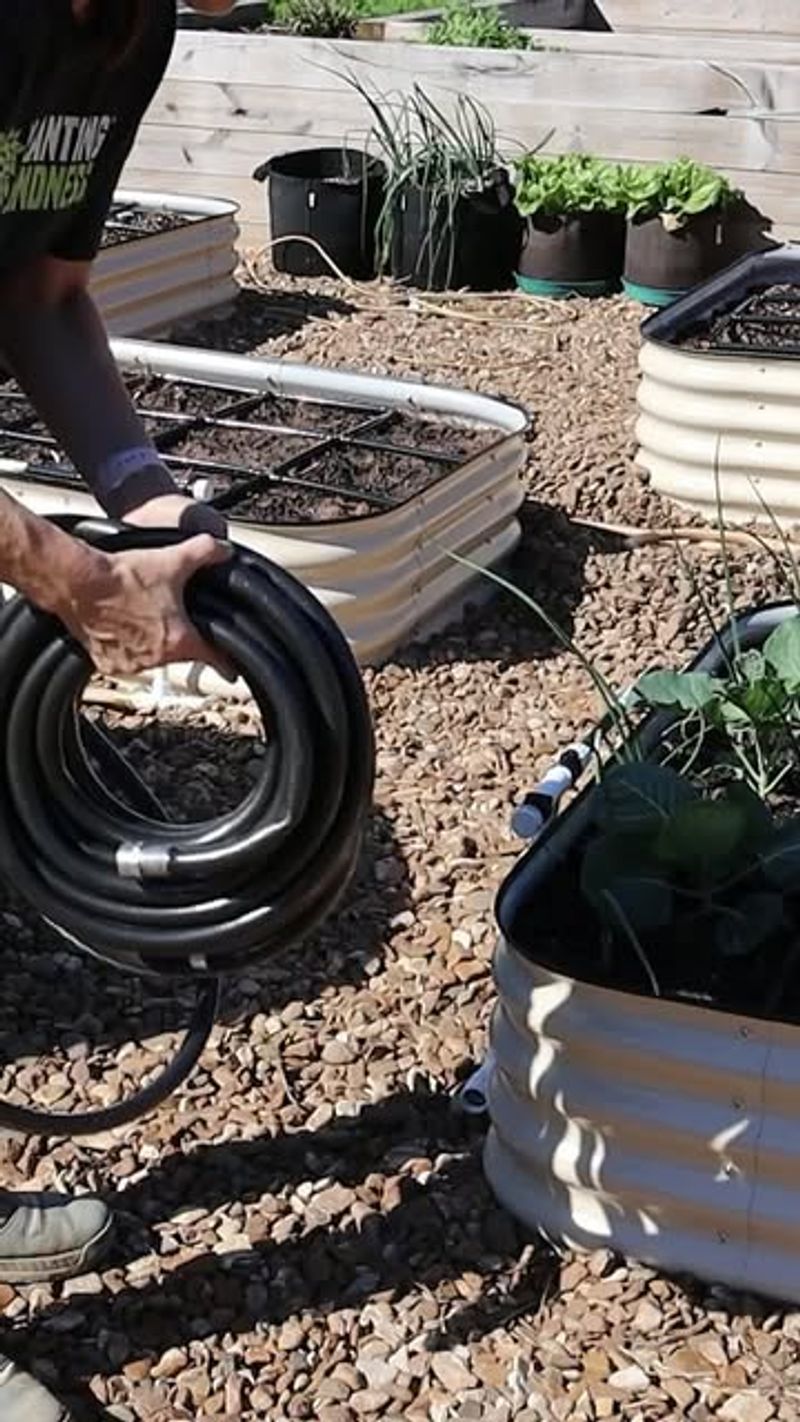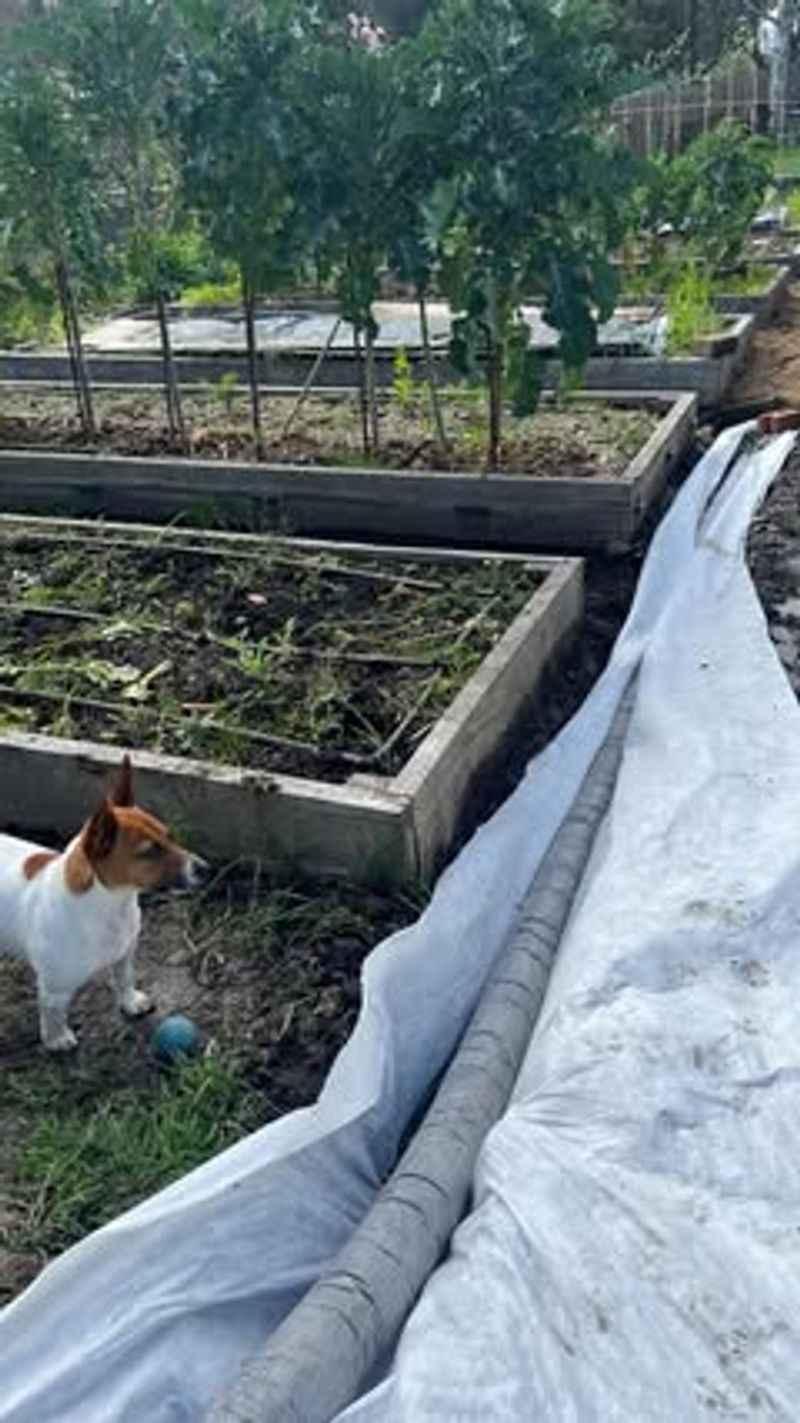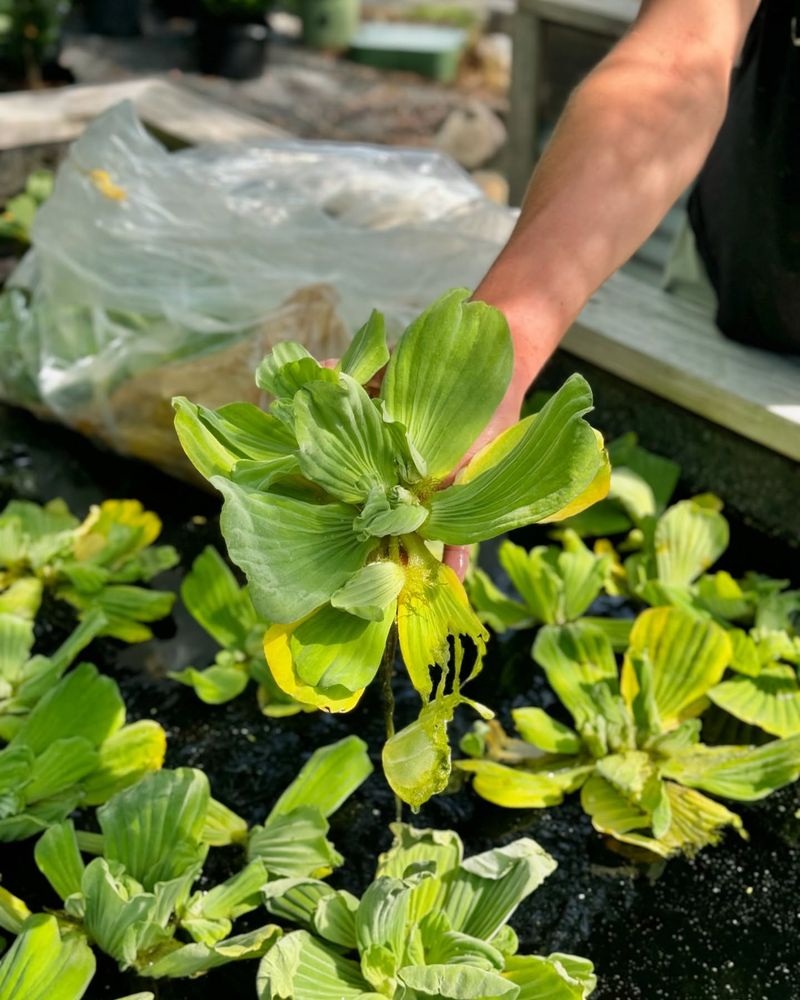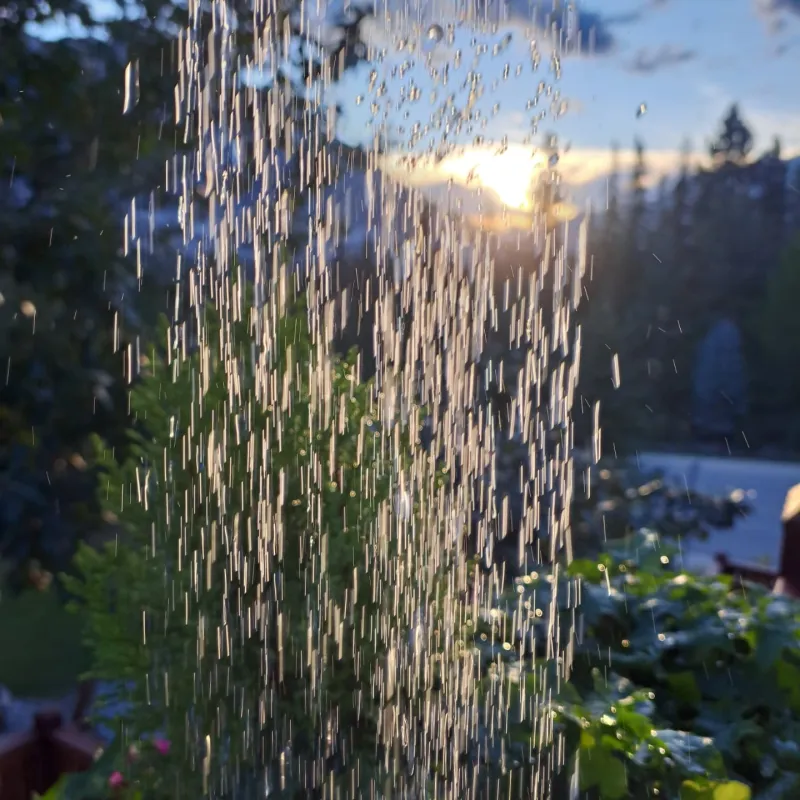July brings heat, sun, and fast-growing veggies—but it also raises the stakes for watering. Too much, too little, or bad timing can all spell trouble for your harvest. I’ve seen even healthy gardens struggle in midsummer because of simple watering missteps.
These 16 common mistakes can stress your plants, invite disease, or stunt growth. Catch them now, and your garden will thrive through the hottest weeks of the season.
1. Watering at High Noon
Spraying water on your plants during the hottest part of the day wastes precious moisture. The water evaporates quickly in the midday sun before roots can absorb it, leaving plants thirsty despite your efforts.
The water droplets on leaves can also act like tiny magnifying glasses, intensifying the sun’s rays and causing leaf burn. Morning watering (between 5-9 AM) allows plants to drink up before the day heats up.
2. Shallow Sprinkles Instead of Deep Soaking
Light, frequent watering creates weak, shallow root systems that can’t withstand July’s intense heat. Plants develop a dependency on surface moisture rather than growing deep roots that access underground water reserves.
A better approach is watering deeply but less frequently. This encourages roots to grow downward, creating stronger plants with better drought resistance. Aim for moist soil 6-8 inches deep with each watering session.
3. Ignoring Mulch as a Water-Saving Tool
Bare soil in July’s heat is like leaving your garden’s water faucet wide open. Without protective mulch, moisture evaporates rapidly from the soil surface, forcing you to water more frequently while stressing your plants.
A 2-3 inch layer of organic mulch works wonders by keeping soil cool, reducing evaporation, and preventing weeds that compete for water. Straw, shredded leaves, or compost are excellent choices that gradually break down to feed your soil.
4. One-Size-Fits-All Watering Schedule
Treating all vegetables the same when it comes to watering leads to either drowning or dehydrating certain plants. Shallow-rooted crops like lettuce and radishes need more frequent watering than deep-rooted tomatoes or squash.
Heavy feeders like cucumbers and melons require consistent moisture, while herbs like rosemary and sage prefer drier conditions. Group plants with similar water needs together, creating hydrozones that make efficient watering much easier during July’s demanding conditions.
5. Overhead Sprinkler Addiction
Relying on overhead sprinklers during July wastes enormous amounts of water through evaporation and runoff. Up to 50% of sprinkler water never reaches plant roots! Plus, wet foliage in summer heat creates perfect conditions for fungal diseases.
Drip irrigation or soaker hoses deliver water directly to the soil where roots need it. These methods use up to 70% less water than sprinklers while keeping leaves dry and disease-free. Your water bill and vegetables will both thank you.
6. Forgetting the Finger Test
Watering on autopilot without checking soil moisture first is a common July blunder. Just because the surface looks dry doesn’t mean roots need water – the moist zone might be just below the surface.
The finger test never fails: stick your index finger into the soil up to the second knuckle. If it comes out dry, water deeply. If it feels moist, wait another day. This simple habit prevents both overwatering and underwatering during critical growing periods.
7. Watering the Leaves Instead of the Soil
Splashing water on plant leaves during July watering sessions creates the perfect environment for powdery mildew, early blight, and other fungal villains. Wet foliage in summer heat is practically an invitation for disease.
Direct your watering efforts at the soil around plants, not from above. For established plants, aim for the root zone about 4-6 inches from the stem. Your goal is moist soil, not wet plants. Soaker hoses excel at delivering this targeted hydration.
8. Evening Watering in Humid Climates
Watering vegetables in the evening during July might seem logical – cooler temperatures mean less evaporation, right? Unfortunately, in humid areas, this practice leaves foliage wet overnight, creating perfect conditions for fungal problems.
Morning watering (5-9 AM) gives plants time to dry completely before evening humidity rises. If you must water in the evening, use drip irrigation or soaker hoses to keep foliage dry while providing moisture to thirsty roots.
9. Neglecting Container Gardens
Container vegetables often wither in July while their in-ground neighbors thrive. Pots heat up dramatically in summer sun, causing soil to dry out much faster than garden beds. A container that was fine with once-daily watering in June might need twice-daily attention in July.
Check container moisture every morning and evening during hot spells. Group pots together to create a more humid microclimate, and consider moving them to afternoon shade locations. Self-watering containers can be lifesavers during July’s intense heat.
10. Ignoring Weather Forecasts
Sticking to rigid watering schedules regardless of weather conditions wastes water and can stress plants. Watering right before a summer thunderstorm might seem harmless, but it can lead to waterlogged soil and root problems.
Check weather forecasts daily during July. If rain is predicted, adjust your watering plans accordingly. After heavy rain, check soil moisture before resuming your regular schedule. Smart irrigation controllers that connect to weather data can automate this process for busy gardeners.
11. Using Cold Hose Water Directly
Blasting vegetables with icy water from a sun-heated hose creates temperature shock that can stunt growth and stress plants. Water sitting in hoses can reach 140°F in July sun – hot enough to damage tender roots when suddenly released.
Let water run for a minute before directing it to plants, allowing the temperature to stabilize. Better yet, use rain barrels or large containers to collect and naturally warm water before applying it to your garden. Your sensitive vegetables will show their appreciation with better growth.
12. Forgetting to Water Deeply After Fertilizing
Applying fertilizer during July’s heat without proper watering can burn plant roots and waste nutrients. Fertilizers are salts that need adequate moisture to dissolve properly and be useful to plants rather than harmful.
Always water deeply after fertilizing, especially in summer. This helps move nutrients into the root zone while preventing salt buildup that can damage plants. For liquid fertilizers, apply to already-moist soil and follow with additional water to ensure proper distribution.
13. Inconsistent Watering Patterns
Vegetables develop splitting, cracking, and blossom end rot when subjected to erratic watering schedules in July. Tomatoes and squash are particularly sensitive to moisture fluctuations, responding with physical defects that ruin your harvest.
Consistent soil moisture is crucial during fruit development. Aim for even moisture throughout the week rather than cycles of bone-dry followed by soaking wet. Mulch helps tremendously, as does watering on a regular schedule based on actual soil conditions.
14. Watering Without Checking Drainage
Even in July’s heat, overwatering can occur in areas with poor drainage, leading to root rot and nutrient deficiencies. Standing water around plants creates oxygen-deprived soil where roots suffocate rather than thrive.
Before establishing watering routines, test your soil’s drainage by digging a 12-inch hole, filling it with water, and seeing how quickly it drains. If water remains after several hours, improve drainage with compost, raised beds, or by redirecting water flow away from garden areas.
15. Using Softened Water on Vegetables
Home water softeners replace calcium and magnesium with sodium – great for preventing pipe scale but potentially harmful to vegetable gardens. The sodium buildup in soil can damage soil structure and inhibit plant growth, especially during July’s already stressful conditions.
Use unsoftened water for your garden whenever possible. Rain barrels provide an excellent alternative, capturing natural, sodium-free water. If softened water is your only option, leach excess sodium occasionally by watering heavily to flush the soil.
16. Neglecting Wind Conditions When Watering
Watering during windy July days results in uneven distribution and significant water loss. Wind can blow water completely away from target plants or cause sprinklers to miss their mark entirely.
Choose calm moments for watering, typically early morning when wind is minimal. If using sprinklers during breezy conditions, adjust the water pressure higher to compensate or switch to ground-level watering methods. Windbreaks like temporary fencing can also protect both plants and water efficiency during critical summer months.

